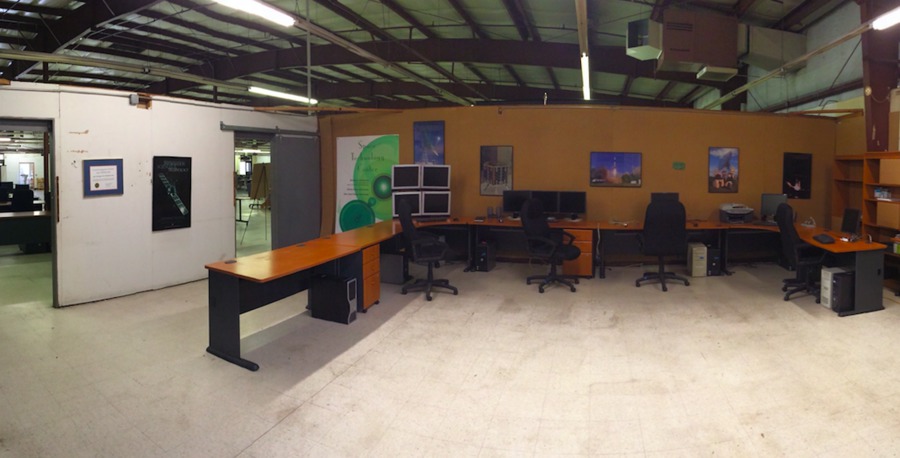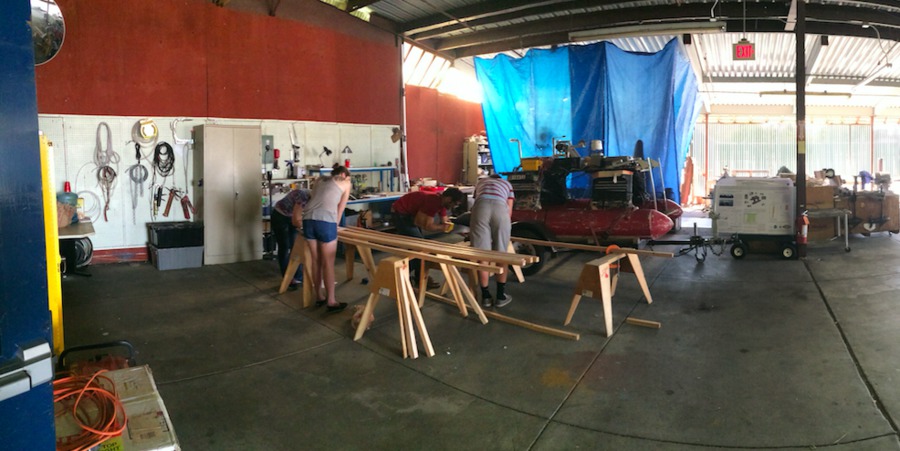Makerspace Profile
Overview
The Santa Clara University Robotic Systems Laboratory’s (RSL) Center for Robotic Exploration and Space Technologies (CREST) Facility was established as a program to enhance collaborative student-based projects relating to NASA and the aerospace industry. The RSL/CREST facility hosts resources for students to work on research and design projects involving the development and field operation of systems such as nanosatellites, marine robots, land rovers, and aerial robots. The facility includes a computational design center, a satellite mission control room and multiple satellite communication stations, a low-grade clean room, a classroom, project development space, maker-grade tools, and an indoor robotic test range. The CREST Facility is located within NASA Ames Research Center in Mountain View. The facility is funded by the Robotic Systems Laboratory, the School of Engineering, and as part of an R&D contract with NASA Ames Research Center.
Access
Students/staff/faculty working in and with the Robotic Systems Laboratory routinely use the facility, as do partners from collaborating academic institutions, companies, non-profit groups, and government agencies. Work done in the facility specifically relates to research and development of RSL/CREST systems and technologies or to activities supporting affiliated courses, design projects and/or thesis/dissertation research activities. Students who are using the space typically have access to the space 24-7.
Tools, Materials and Resources
The tools that are available are general hand tools, light duty power tools, and model-shop grade machines. Specialty software and tools to support work on wireless communication systems, embedded platforms, etc. are available. Much of the space supports not only the development of systems but also the experimental, functional testing of these systems. High ceilings and a protected outdoor work area allow large-scale projects to be assembled and tested as well; outdoor fields and access to the Moffett Field runways allow range testing to be performed as well.
Access & Usage Costs
There are no per-use or term fees for personnel using the space. Costs are funded through contract/grant work and through project-oriented funds from the Robotic Systems Laboratory and School of Engineering.
Management
The facility is managed by Professor Kitts and staff from the Robotic Systems Lab. Students wishing or required to use the space for undergo safety training and are given access to work in the space on a person by person approval basis.
Training
We work with each other to train and learn. Most things that are being done in this space are class and research related, so no direct training is done.
Use and Activity
The place is used as a general workshop, experimental testbed site, and class room. Special events include dinners, mentoring receptions, field events, and celebratory events. This is a hangout for nerdy engineer types.
Culture and Community
This space is where people come to hang out, build, create and let their projects come to life. As long as you have a space available for people to come and tools to support creative prototyping, they will come, and great things will happen.
Challenges and Lessons Learned
The hardest part about this Makerspace is access since it is disconnected from the Santa Clara University. The students who go there have to travel from campus. They have to either drive, carpool, or take public transportation to get to the facility. That being said, people love the space available to them and find a way to get there.
Advice to other Makerspaces
They are costly, whether it is in money or time. You need to make sure you can stay in control of your space and keep on top of everything that needs to be done there so people can continue to use it.

